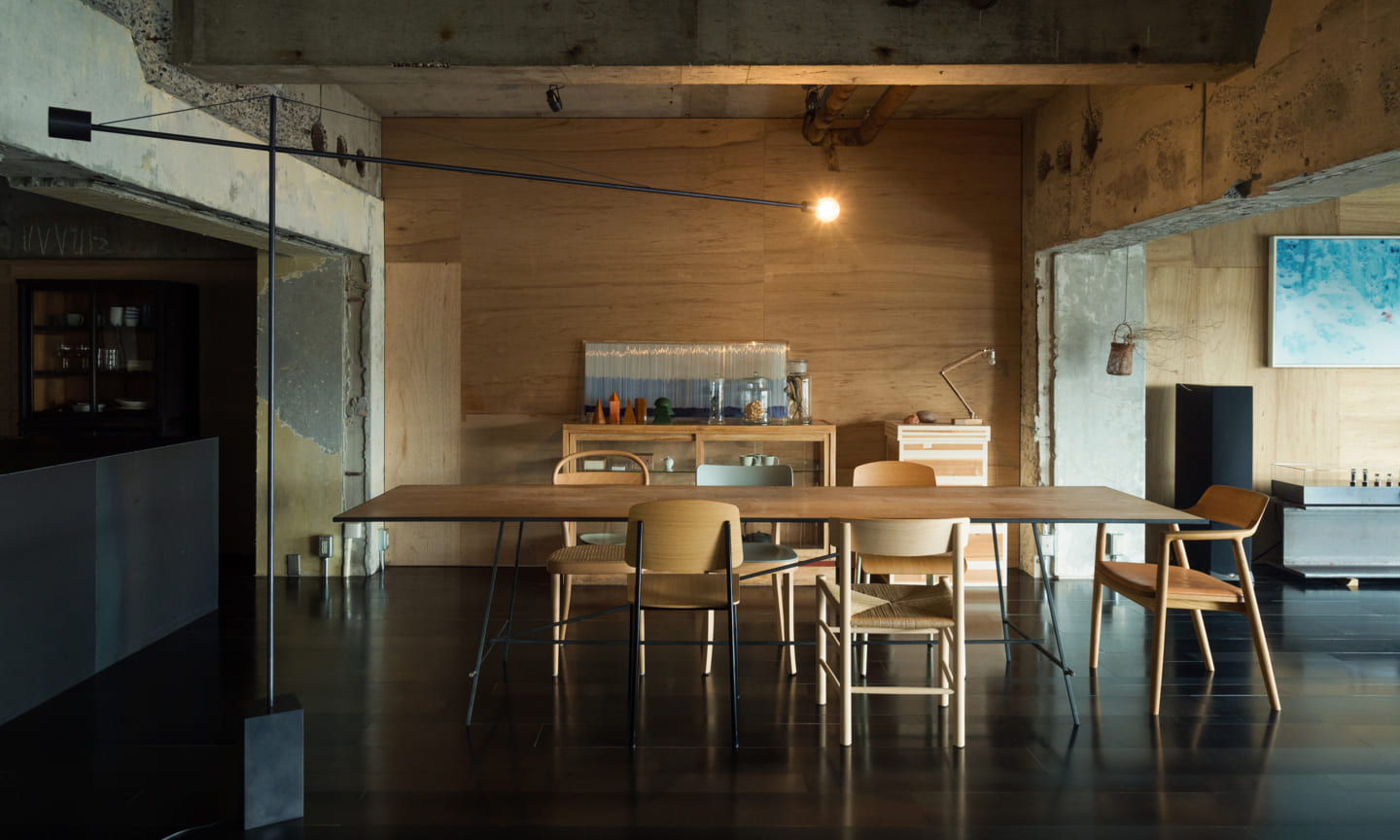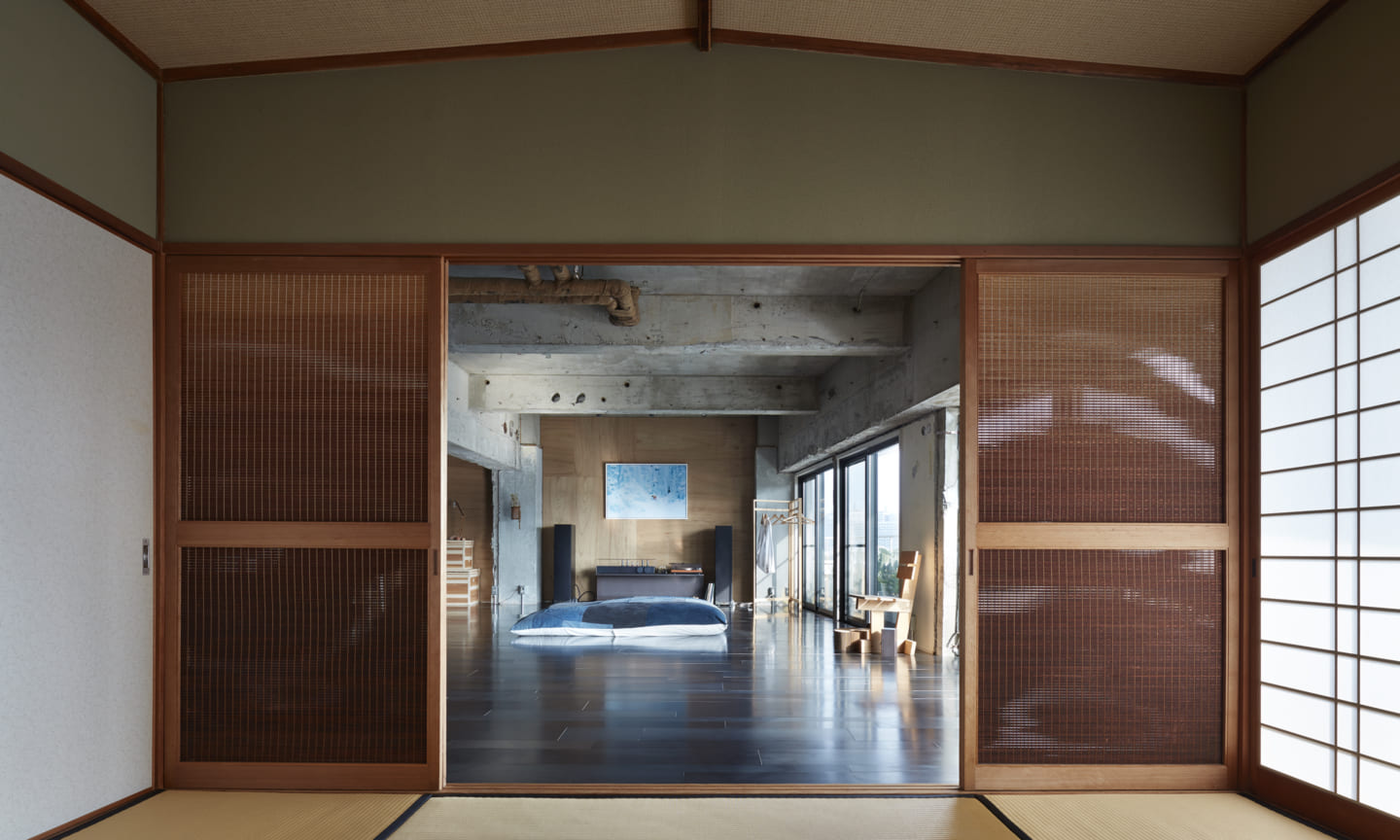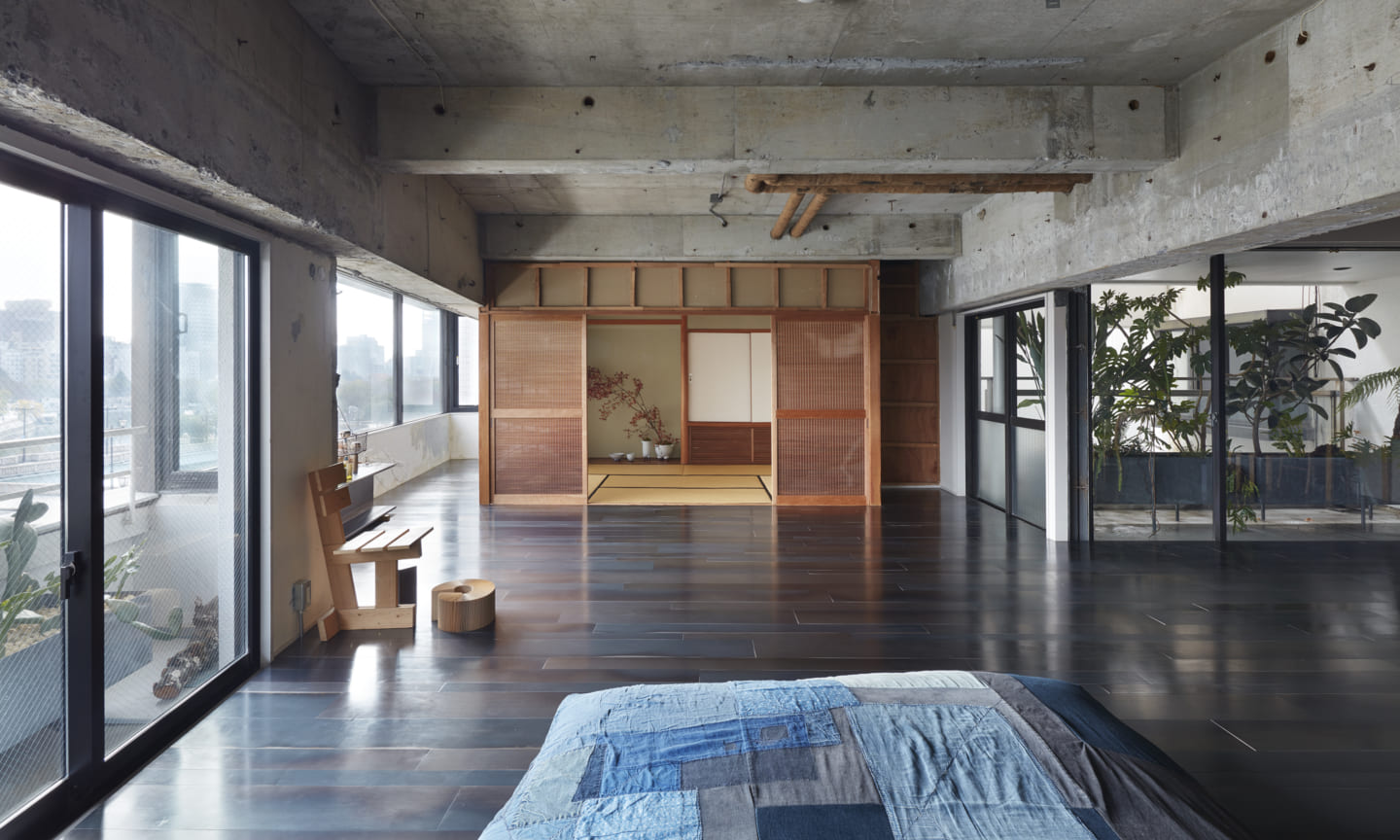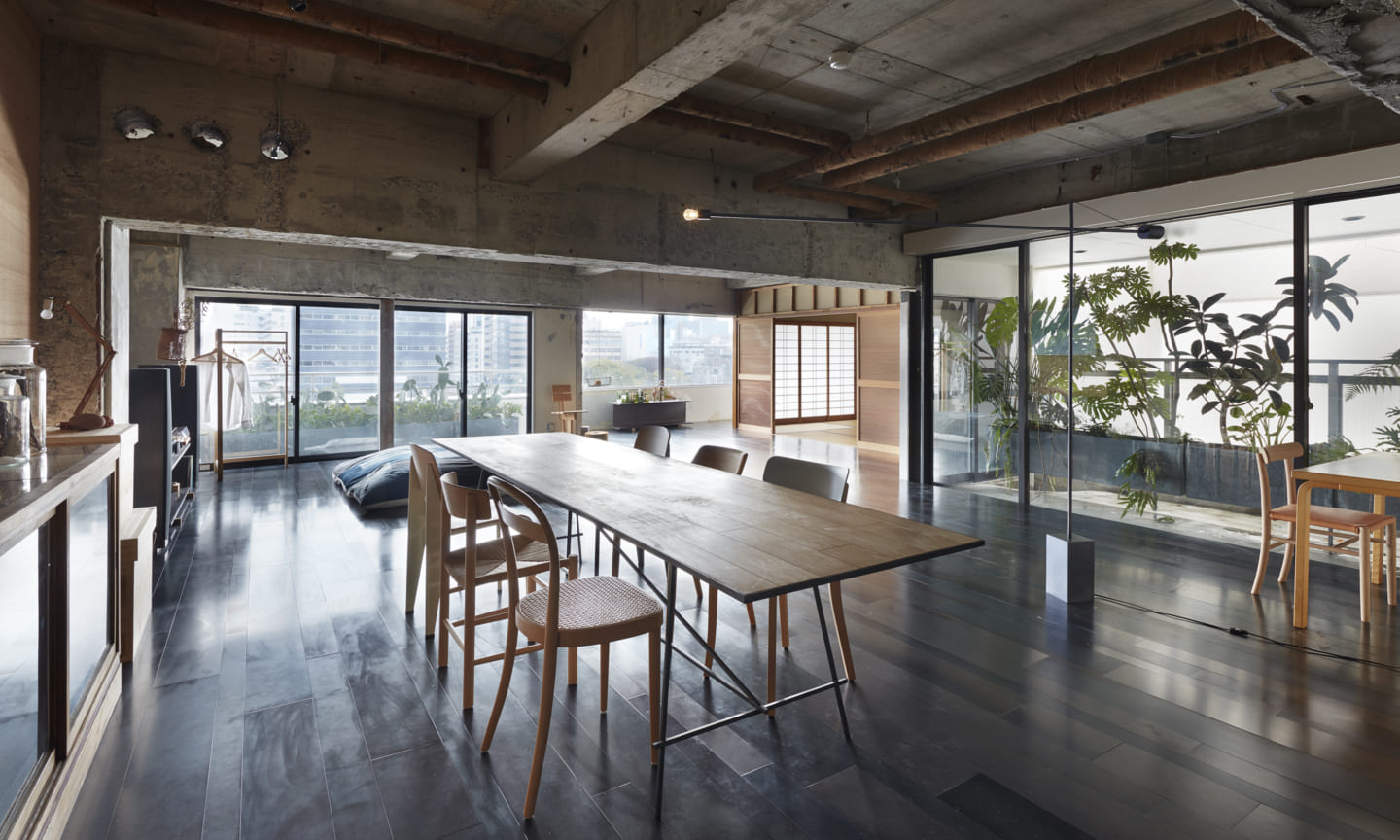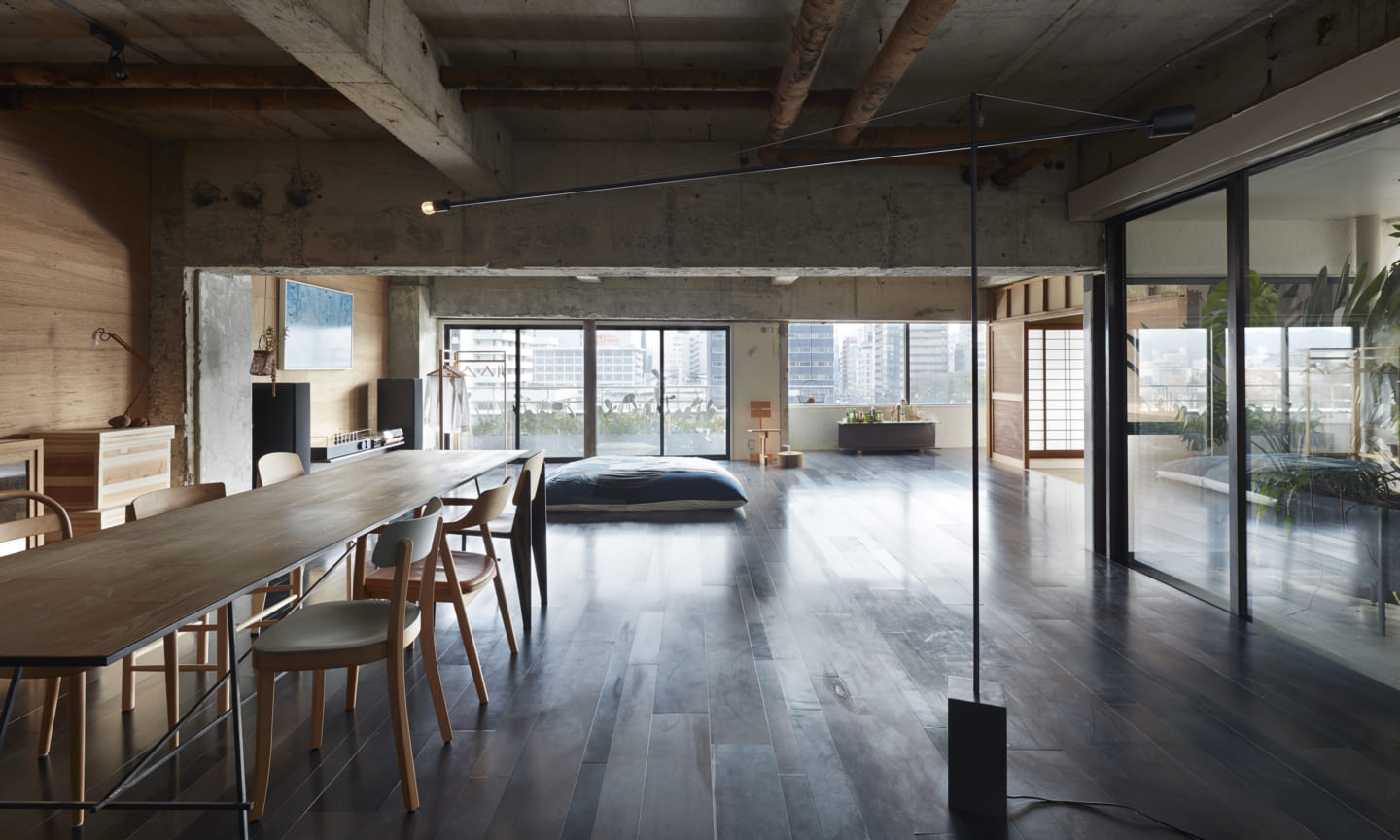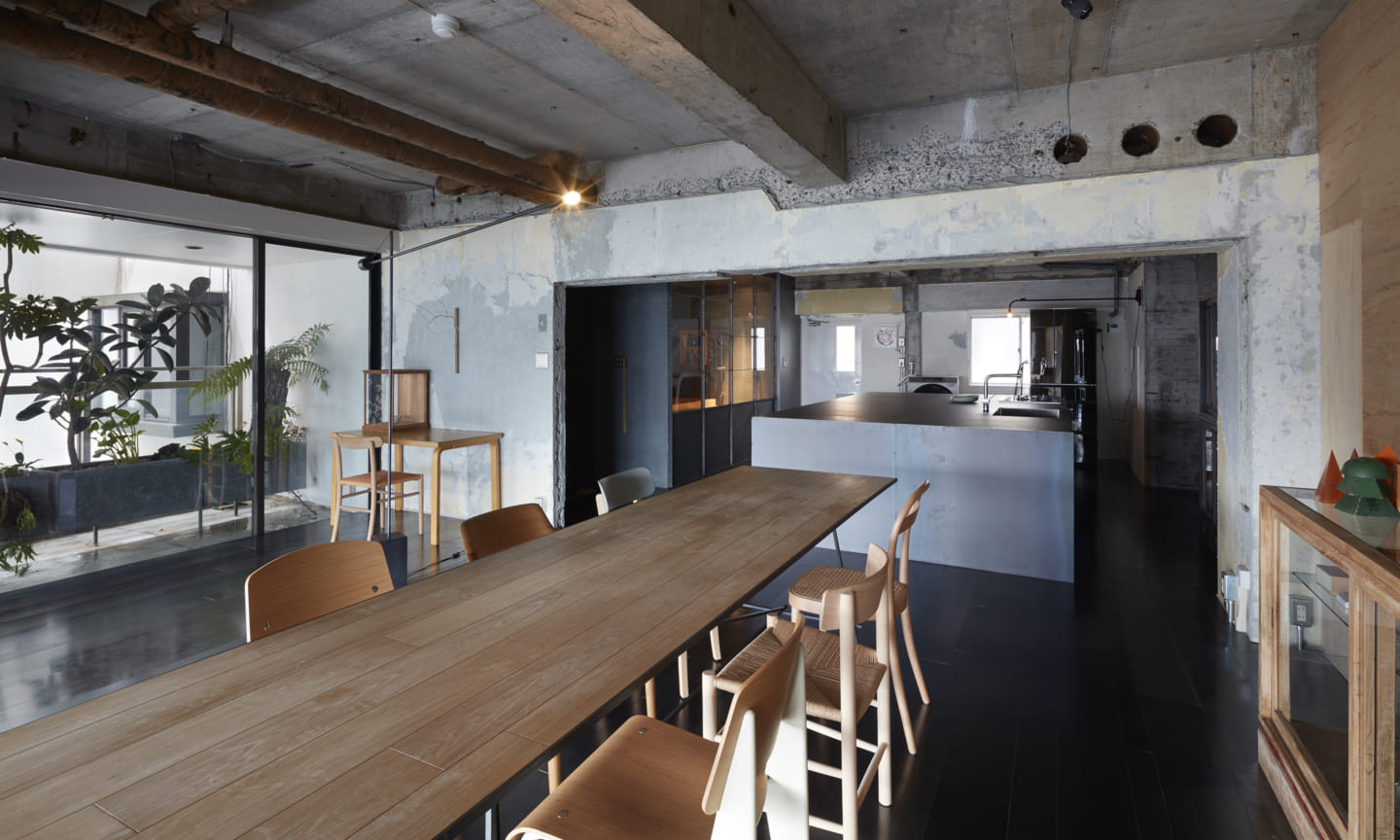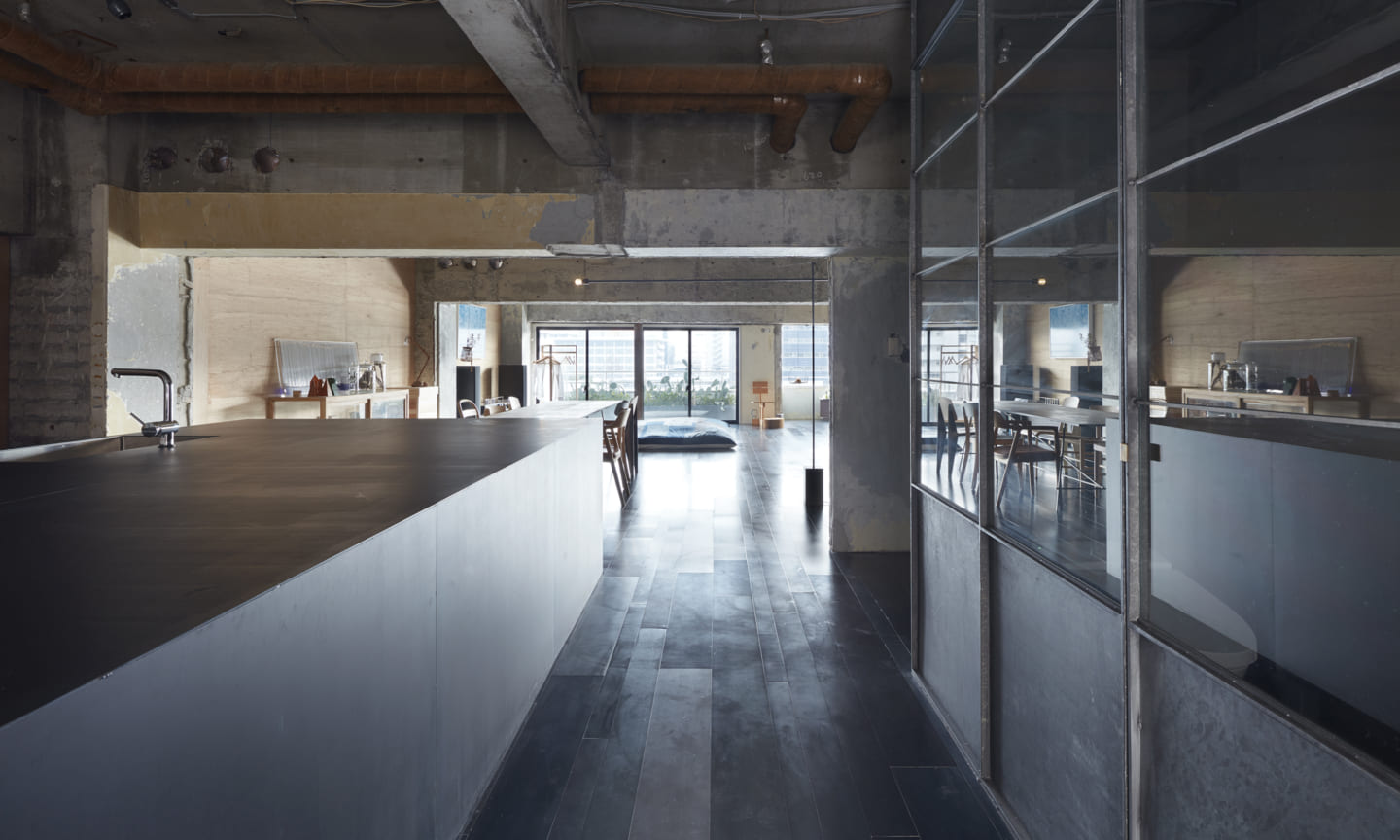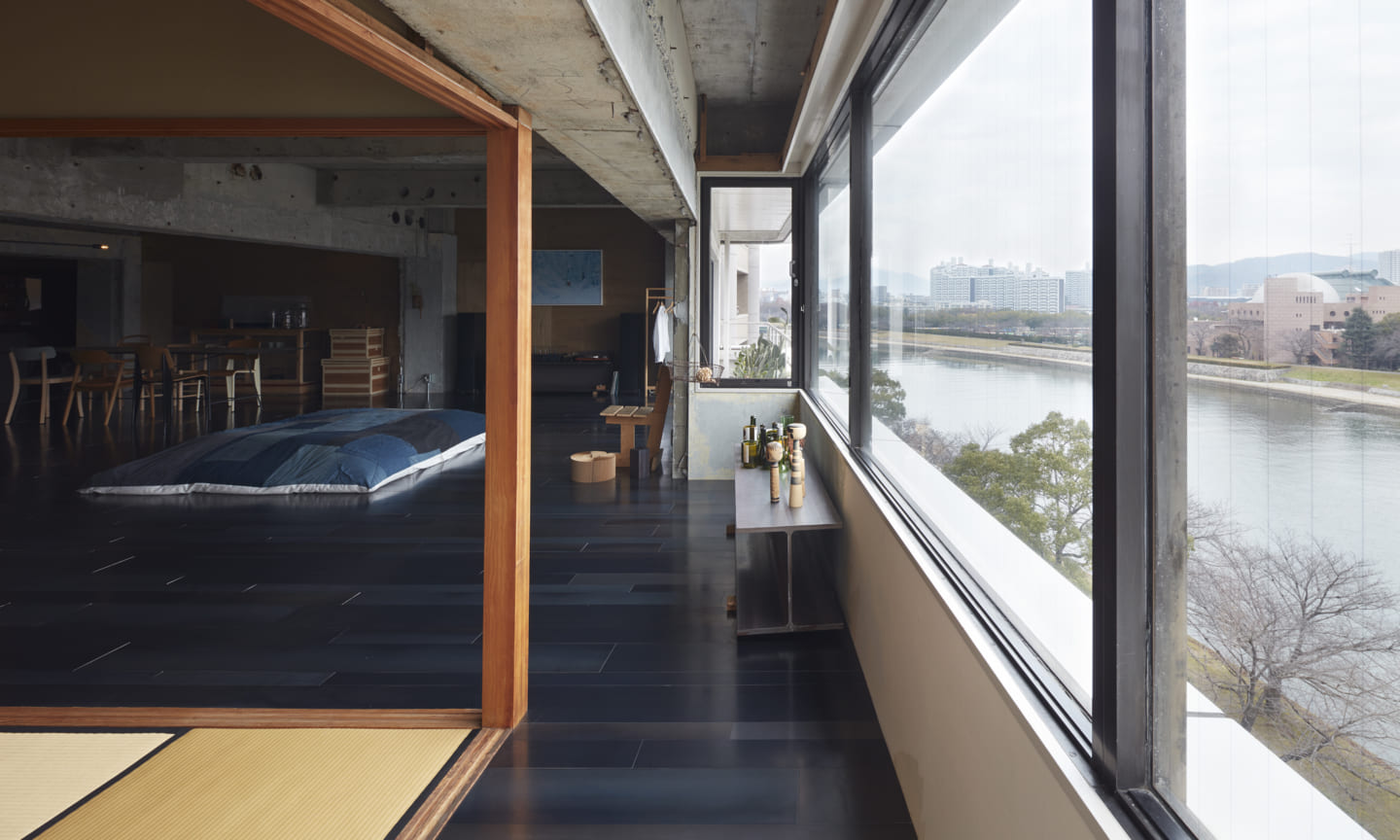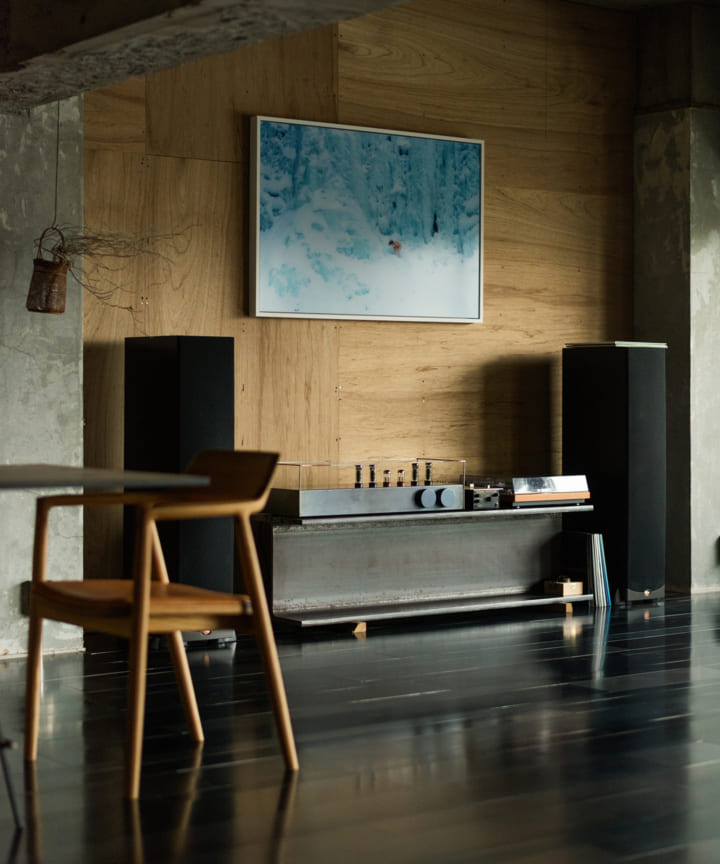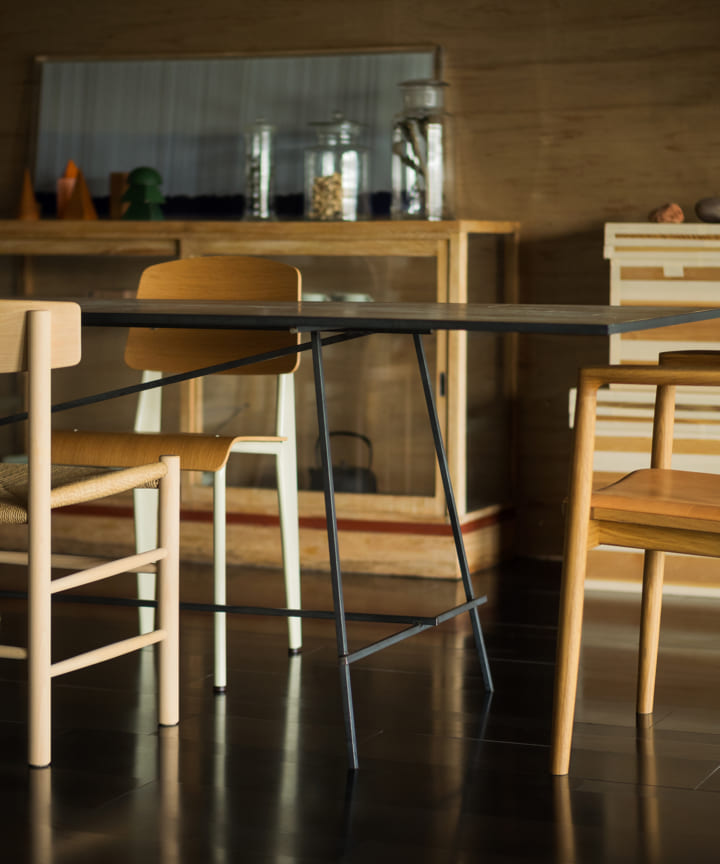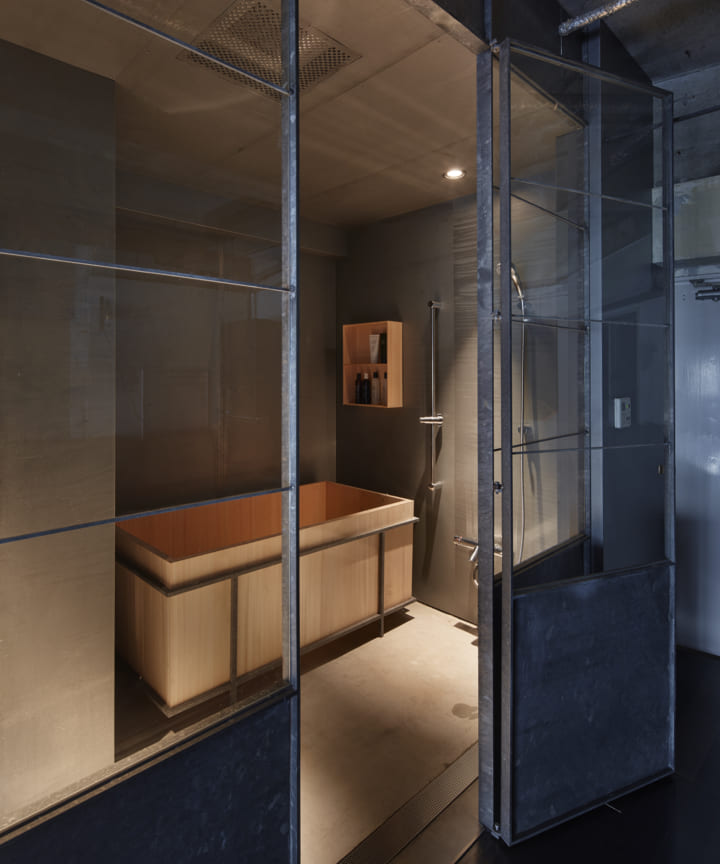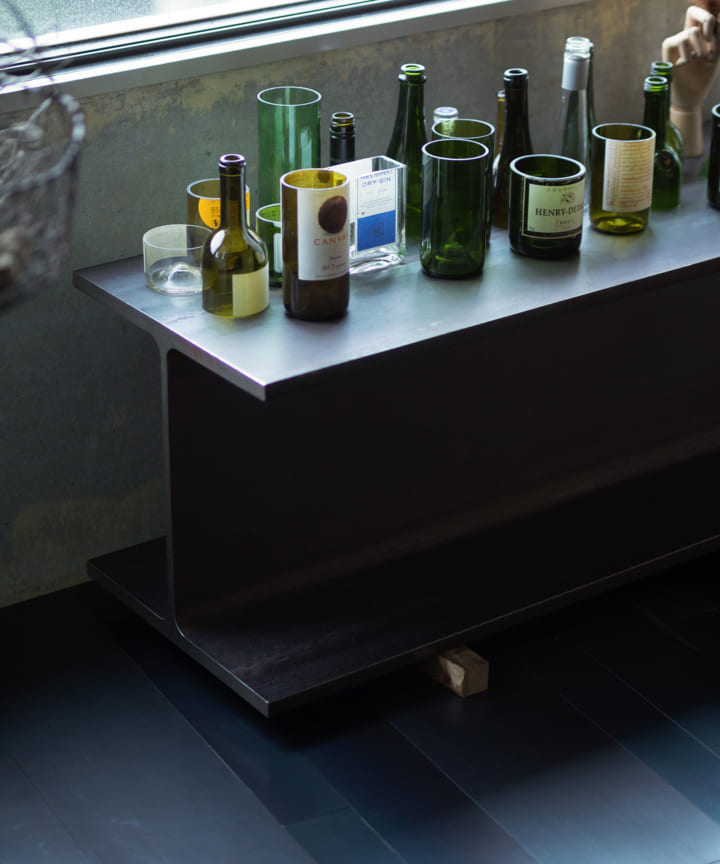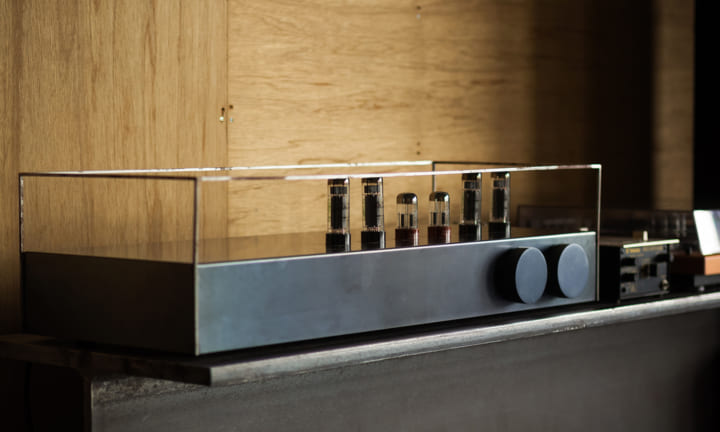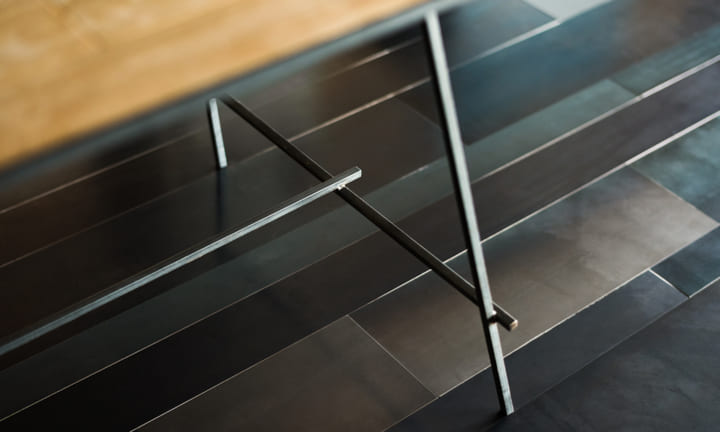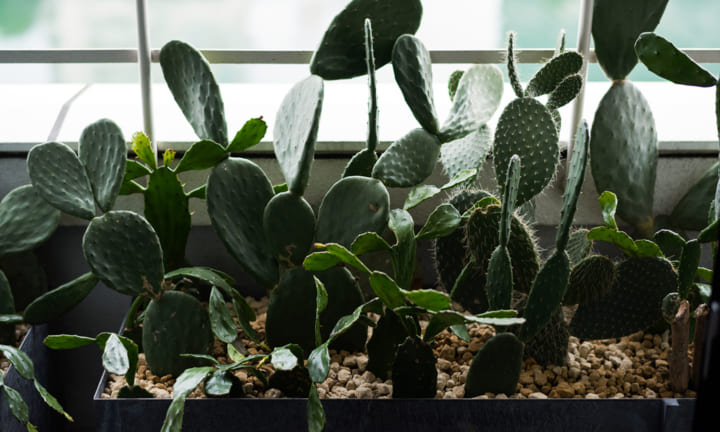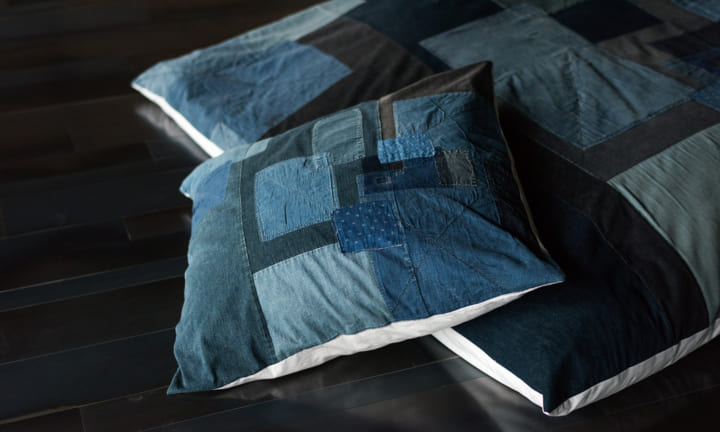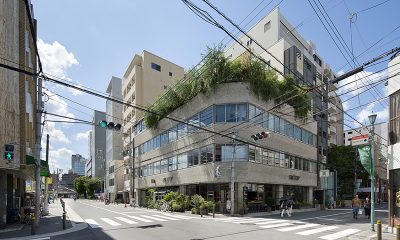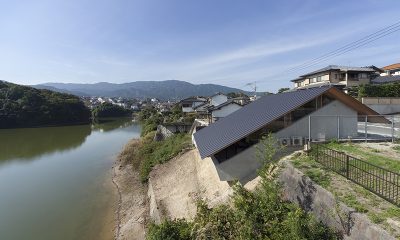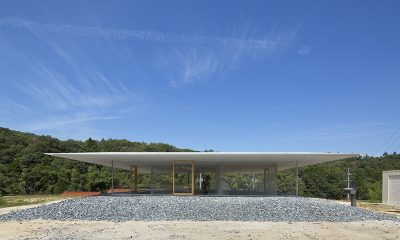Thinking about the origins
Making things begins with what we call “materials”. That’s the fundamental definition. When thinking about the way space functions, “things” become the materials for making, which may, in turn, give rise to thoughts about the origins of made things in general.
We can study how our own creations originate by viewing them through the lens of how our forebears were able to make things, considering all aspects of what was at their disposal in arriving at their methods. Perhaps in contemporary life we’ve become used to the idea of selecting the materials that go into what we make based upon their suitability to the individual. It may be that in thinking about the possibilities of architecture to come, we benefit from looking at the ways in which the making of things came about.
The home in Hiroshima is in a 43-year-old residential apartment building. The plan was thought about in terms of our constant deliberations about newness, history, “completeness in incompletion”, and the future.
Beginning with the retention of an enclosed, pre-existing Japanese-style room, we began to establish a relationship between new and old elements amid the deconstruction of the surrounding space. For newly-added portions we used steel to the extent possible. Much like timber, steel is a material that can be put to use in flooring, furniture, window and door sashes, flower beds, lighting, and any number of interior accessories. Through the corresponding textures of black metal, the contrast between the formal Japanese room and the building’s bones, the aim of the plan became clear.
Steel has to be maintained, lest it alter its nature over time. In this regard it reminds us of the care our predecessors gave to the structures they built for generations to follow, while it also sets up our own intimate relationship to our surroundings.
Against the background of society that seeks to be more “maintenance-free” we see how the application of the hands transmits the heart into the places in which we dwell, which may give meaning to how we use them, and where the feeling of attachment to “things” originates. This is a home in which affection for change is nurtured as one works on it. One could say this home is a handful, but it’s that factor that makes one want to spend the time and effort on it.
